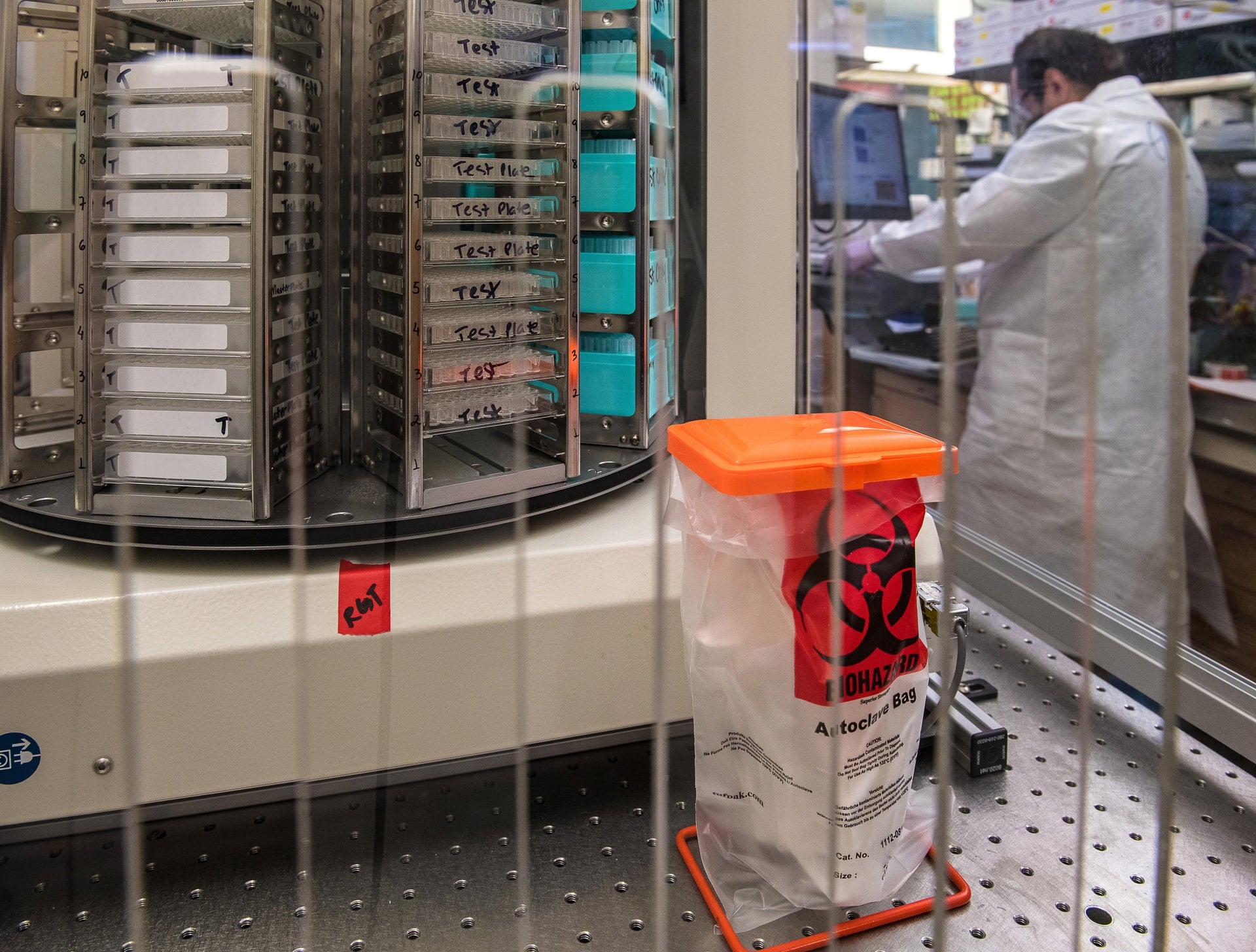Automate & Simplify Bank and Credit Card Reconciliation | Powered by Alluvia
Everyone performs bank reconciliation - why not automate this process?
- Save time by processing statements accurately and fast. All cash payments and receipts are rapidly checked to reconcile bank accounts with the existing transactions.
- Eliminate the need to download or upload files to and from your bank and SAP (multiplied by the number of banks you have.)
- Automation brings the kind of precision that allows any anomalies to be easily detected.
- Help guard against fraud, any irregularities will be quickly picked up and can be investigated without delay.
- Assurance that your accounts are consistent and accurate.
Improve employee satisfaction by automating manual and redundant tasks.
Have questions? Contact us here, email info@nbs-us.com, or call (801) 642-0123.
Want to explore more integrations from SAP Business ByDesign and SAP Business One? Explore our integrations.
[Transcript]
Jack Thrush: (00:00)
Hello everyone. Welcome to Navigator Business Solutions Customers Experience Webinar. Today's webinar is presented by Alluvia which is an integration partner of ours. And gonna run through a few scenarios on that. My name is Jack Thrush. I'm the accounts director here at Navigator. Again, we're very excited to, to welcome Gary from Alluvia. He will present the integrations scenarios and then we will be accepting questions. Everyone's on mute now because of the dreaded go to webinar feedback and echo chamber. That typically happens during a go to webinar. So you'll be on mute and but you can chat your questions over in the questions box which should be on the, like, the go-to go to webinar pop out for you. So just end your questions there at the end of this. We will save some time to answer them. With that, I will turn it over to you, Gary. Thank you everybody for joining.
Gary Lacombe: (01:10)
Thanks Jack, and welcome everyone to today's webinar on banking and credit card integration for sap. As Jack mentioned, we are an integration partner of navigators and we're offering this solution to navigators customers. Just to start, I'm gonna give you just a brief overview of Alluvia and then jump into the bank reconciliation solution. Whoops, I went two slides there. There we go. Okay. So Alluvia is a cloud-based integration solution. And the value of that to you is it provides a rapid deployment as well as a zero impact upgrades scenarios. So when you're going to upgrade, basically just stop the integration, you upgrade and we start the integration up again. We are available for all three SAP products being business one by design and S for H. So no matter what one of those platforms you're running on, we can provide you with any of our solutions.
Gary Lacombe: (02:32)
Our areas of focus are e-commerce integrations, marketplace channels, crm, logistics, procurement and spend management, and of course banking, which we're gonna spend majority of our time on today, as well as some additional SAP solutions. So just to touch on each area at a very high level, and this is an, an inclusive list of everything that we have, just parts of the more well known or more popular integrations in each product category. So in e-commerce, we integrate to the likes of Shopify, W Commerce, big commerce, Magento channel advisors from a e-commerce standpoint square from a point of sale, as well as Shopify from a point of sale perspective, marketplaces, Amazon, Walmart, eBay, the usual specs. From a CR N we have very tight integration to Salesforce, HubSpot, and Zoho Ship station is by far number one shipping solution that we integrate to, although we do others as well as three PL and our other SAP products such as Concur and Aruba concurrent and expense management and rebound the procurement side, we also integrate to expense and purify.
Gary Lacombe: (04:11)
So now I'm gonna jump into our bank reconciliation product here. So our bank reconciliation module connects to most banks globally, if not all banks globally. And I'll explain in a moment. We import bank statements, we also export ACH or outbound payments. We import credit card statements as well and reconcile them. And it's all done within the SAP platform using the user defined matching rules within sap. So the way we integrate is one of two ways. We either use the APA integration that's available through the likes of played MX Orly, and we connect to, they connect to your bank and we connect to them and we import the information through their platform. And that works for 80% of the integrations, but on a certain percentage of, especially around commercial banks, we run into the issue that there's not enough information provided in the API integration.
Gary Lacombe: (05:34)
So for that we'll attack it from a different direction, which is through a file download. So here is depicted three different banks integrating in two different scenarios. One was with through the API connection to plate. Another is through file integration. And this is just showing that we're both US and European protocols to accomplish this task. So we will connect to the bank down the, the bank will download a file into a secured FTP location. We pick that up and create the, the records, the bank's team and excuse me, within sap. Conversely, on the outgoing payment side, we will take the transaction from sap, upload it into the FTP location, which will be picked up from the bank, and payments will be processed leaving a alleviating you from having to actually log into the bank and create the payments.
Gary Lacombe: (06:49)
So here I have a demo of the Eluvia bank reconciliation module and I'm not sure whether you, whether you can hear the audio or not, Jack no, we can't hear the audio. At least I can. Okay, so I'll just talk to it. So what's happening here is we are logging into play. You log in just as if you would log into your bank. It asks you for your code and then you're linked up to your bank and then you're presented with all your accounts, you selecting your bank accounts or your credit card statement. In this case it's a credit card statement and then you're prompted to rename the account. So it's recognizable. If you have multiple accounts at a bank, you want to give them each different name so you know which account you're dealing with.
Gary Lacombe: (08:01)
Once that's done, you save it. So now there's no documents in the system because we just connected it, we were refreshing it and we have the new bank statement. Now this is the Eluvia platform you're looking at here, which you don't necessarily have to log into, but for the demo's sake, we're showing it to you where you can see all of the transactions that are in the file. Once the transaction then is posted, it's imported into, in this case, SAP Business one. So this is just showing that the bank in SAP matches the statement that we pulled from the bank and we double click on that and we can view the details of that statement. Again, the popup depicting they match what was in the file. So the way this works is by operation codes. We set up the operation codes within SAP and that's used to help us match the transactions. So we've created the codes for gas office supplies and so forth. So here you have the shops. Digital purchase is corresponding to office supplies. So when we've set up the business partner codes and now it can match on business partner codes and amounts or business partner and invoice. And that all depends on the matching rules that you set up.
Gary Lacombe: (10:38)
So here we're showing that transactions that are being matched either on business partner code or GL code, and the different categories, basically of the matching. So now we're gonna propose do a proposed posting and it's going ahead and trying to match the actual lines. And all the ones with the check mark have been matched. Here we're identifying a ch transaction that has been, has not been checked, and trying to identify what this is. So we can manually match it. We identify its software, finding the account, and that's how you would go ahead and manually match the transaction. Here's one for flowers, and we're just gonna put that to office supplies. So this is when if finding a payment and it's gonna create a payment on account for invoices that can not find. Once that's complete and all of them have been reconciled, you finalize it. Now we're just looking up a business partner and looking at the account balance. And there it is, it's matched, and here's the outgoing payment.
Gary Lacombe: (12:58)
And that identifies that it was matched using the bank statement reconciliation. Now we're in our charter of accounts. Again, when we drill into the transactions, you'll notice that they were created by the bank statement import. And similarly here, so there you have the bank reconciliation process for business one, it's very similar and by design, which I'm gonna take you through in a minute. But it basically is bringing the payments, the statements in, facilitating the reconciliation process, and then you go ahead and reconcile any unmatched transactions manually and then post them. So now for in by design, the way this works is from the download statement perspective the loaded into the platform of the Livia platform, which you see here, there's one statement for each bank, regardless of how many accounts are within at that bank we feed the statement into by design and it generates a bank statement In the background depicted here, the statements are pushed into by design and under liquidity management you can see them. And here is an example of bank statement with multiple accounts showed here 1 77 and 1 76.
Gary Lacombe: (15:13)
Once the you have those, the transactions are matched to the correct customer supplier, the invoice id, gl count, et cetera, depending on how you're you set up your matching rules, okay, and then goes ahead and tries to match the transactions as seen here. If the are marked as post-processing not required, that means it was able to find the match. And if not, you would go ahead as I saw on the live the the demo earlier, you would go ahead and manually match it. So here we're doing the ma by design matched into the correct customer Shopify guest account, as you can see here, and created the payment transaction in the background. And then on the converse side of the, the opposite side of the coin, we have the upload of the payments. So within by design, you're gonna go ahead and do your payment run within by design. You have your payment run job results here and the details behind the payment run. And then if you notice, it then creates an outbound file and it's based on payment file type. So you could have check wire transfer, bank transfer, whatever the case may be. You set up those, those methods. And based on those methods, the transactions that we include in the file, that file is then uploaded. And here you see the file sitting within the Eluvia platform successfully transmitted to the bank. So that is our bank reconciliation and credit card statement, reconciliation demonstration.






